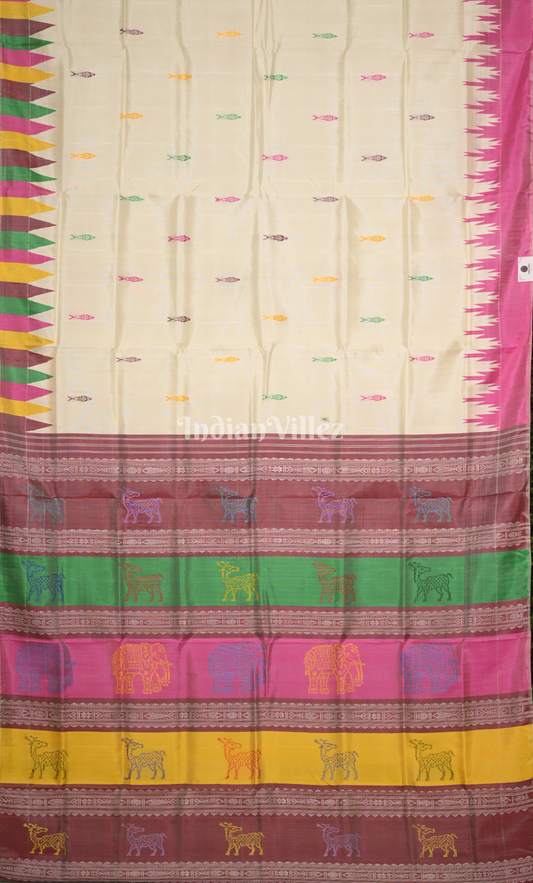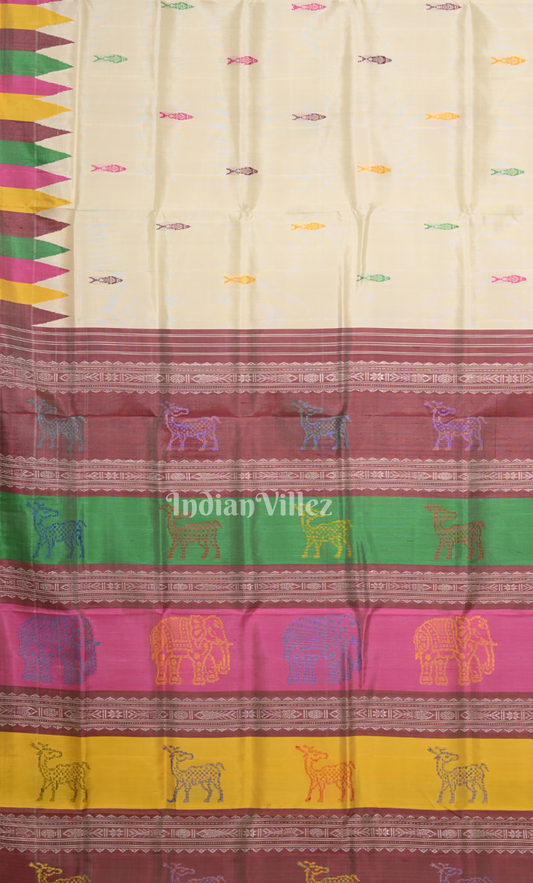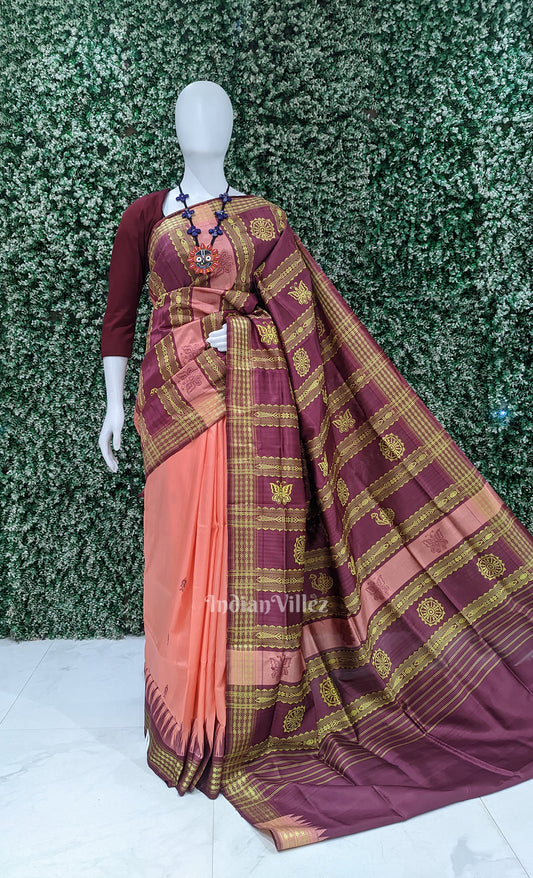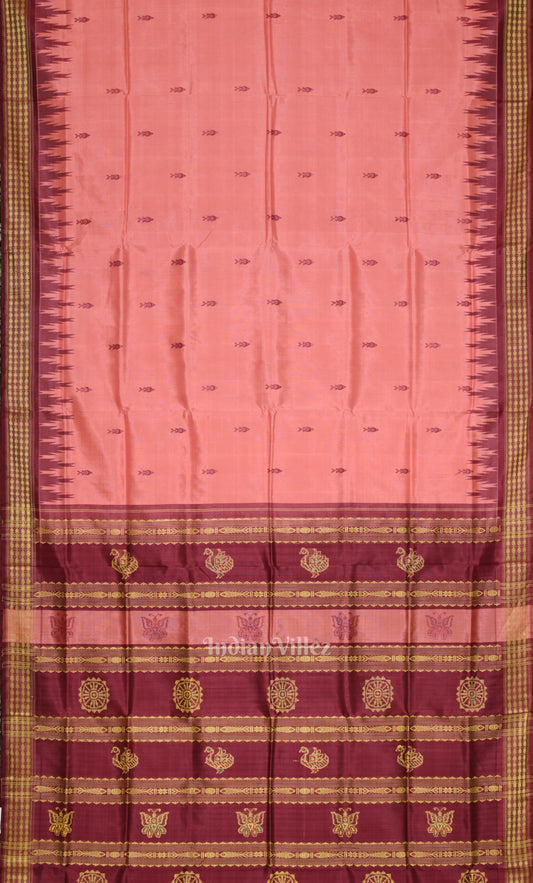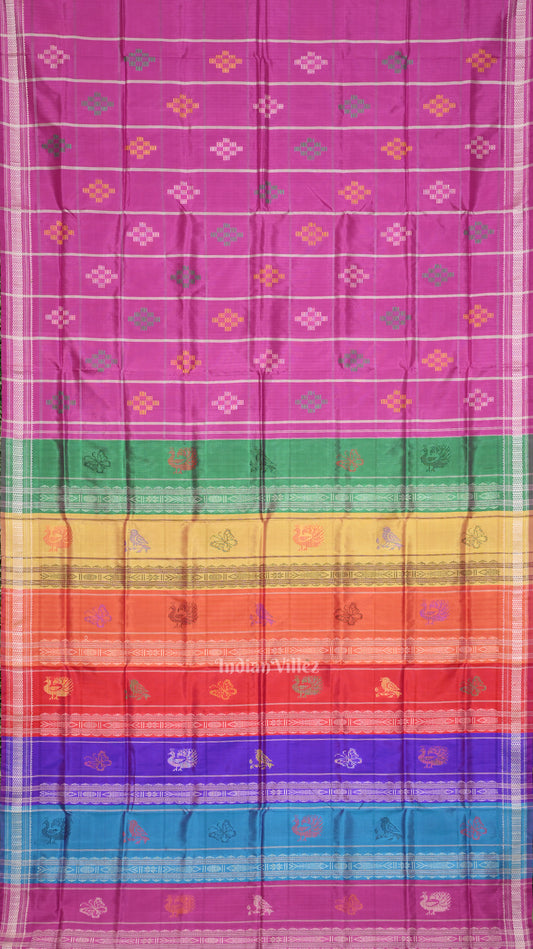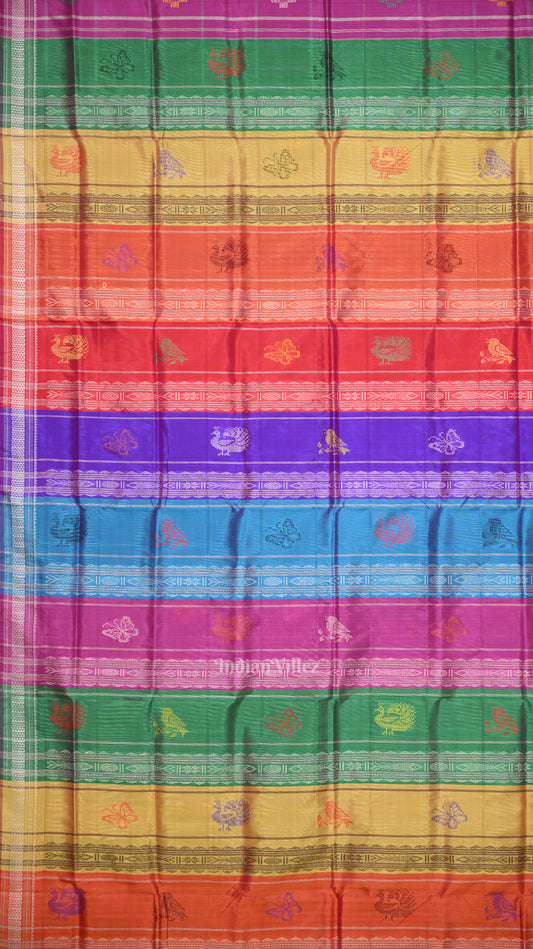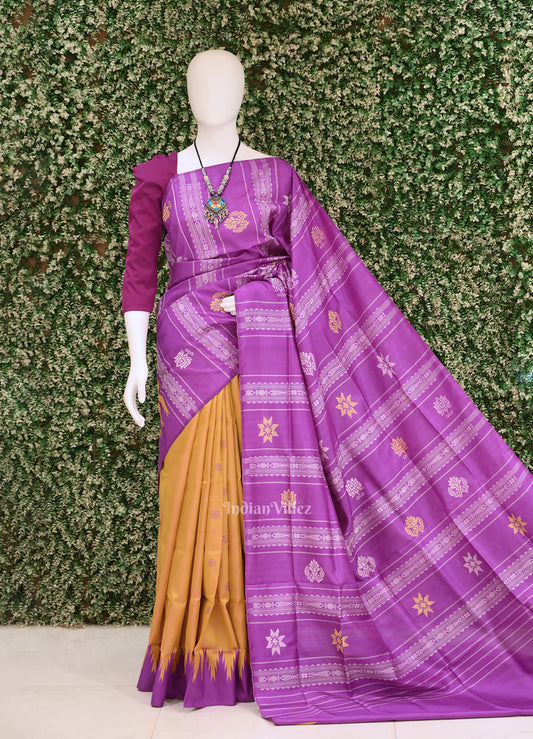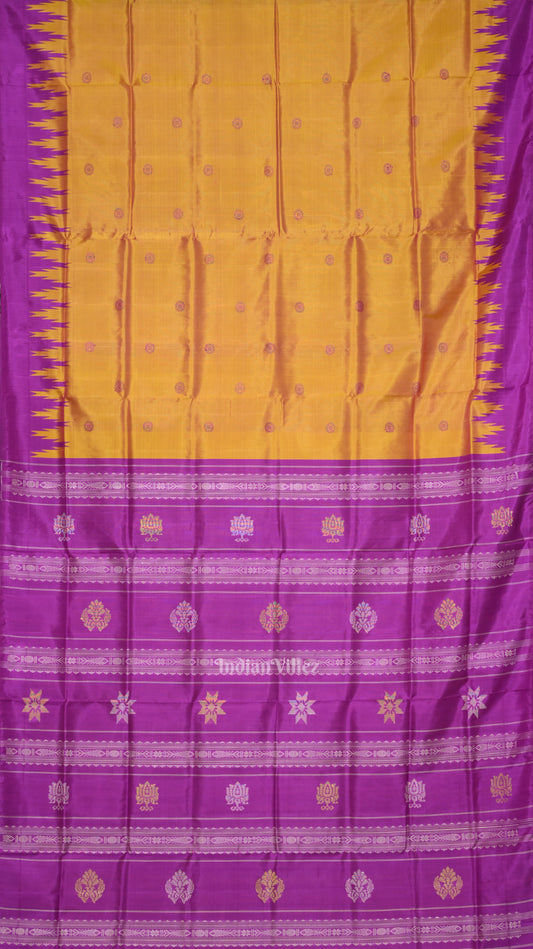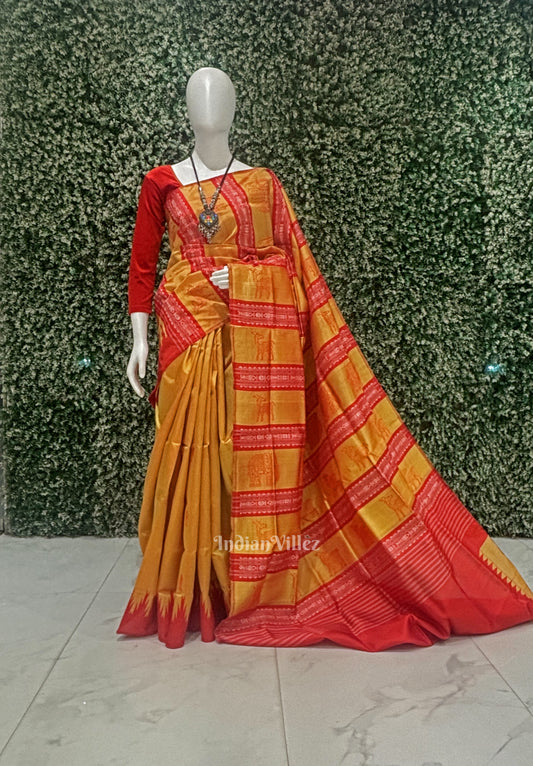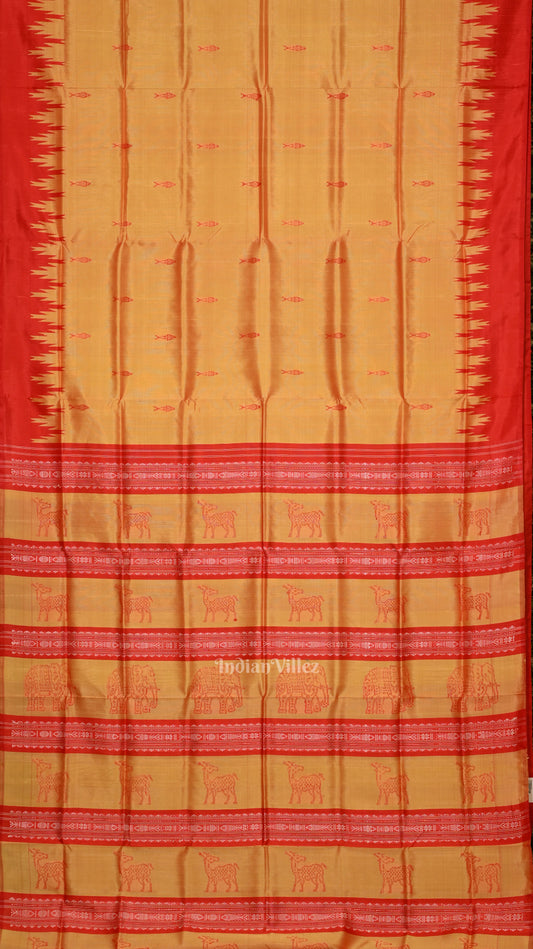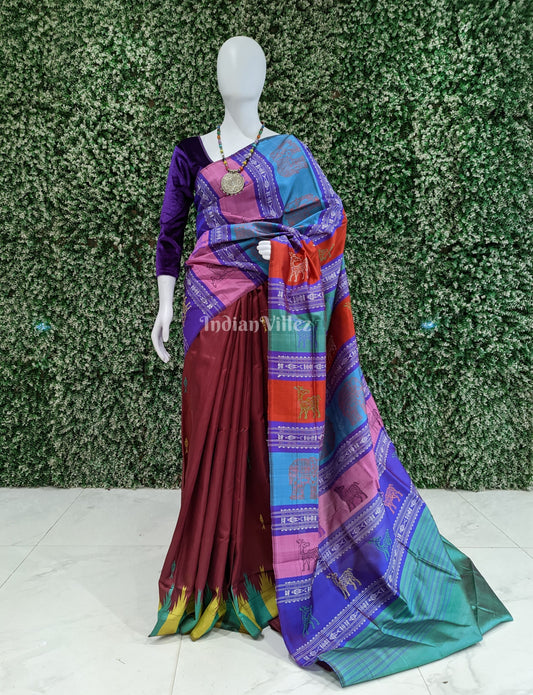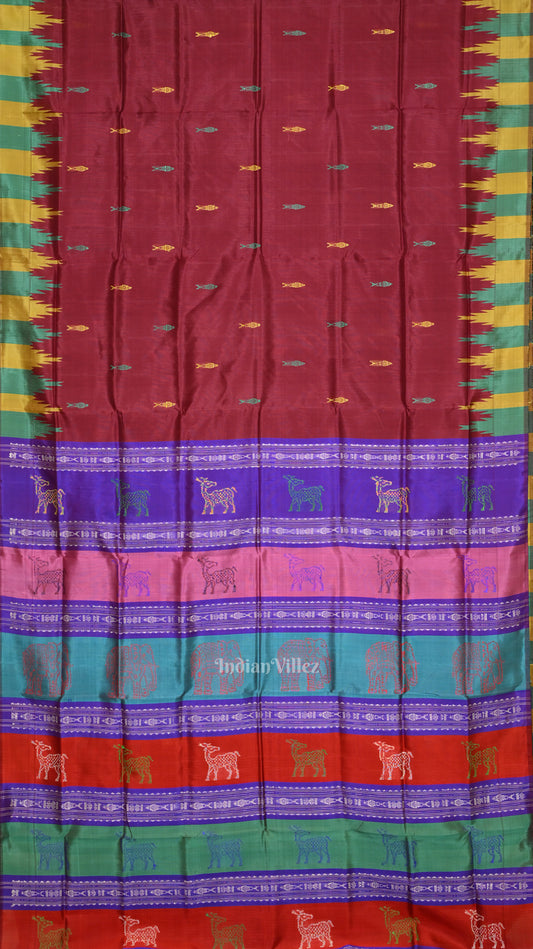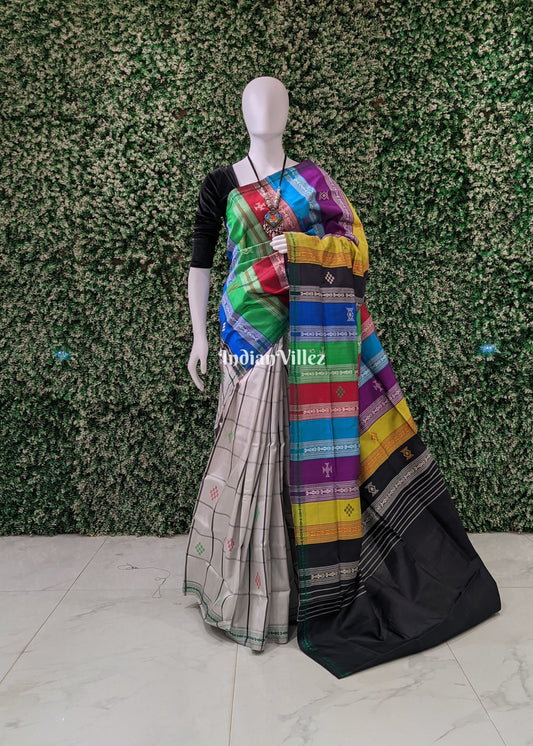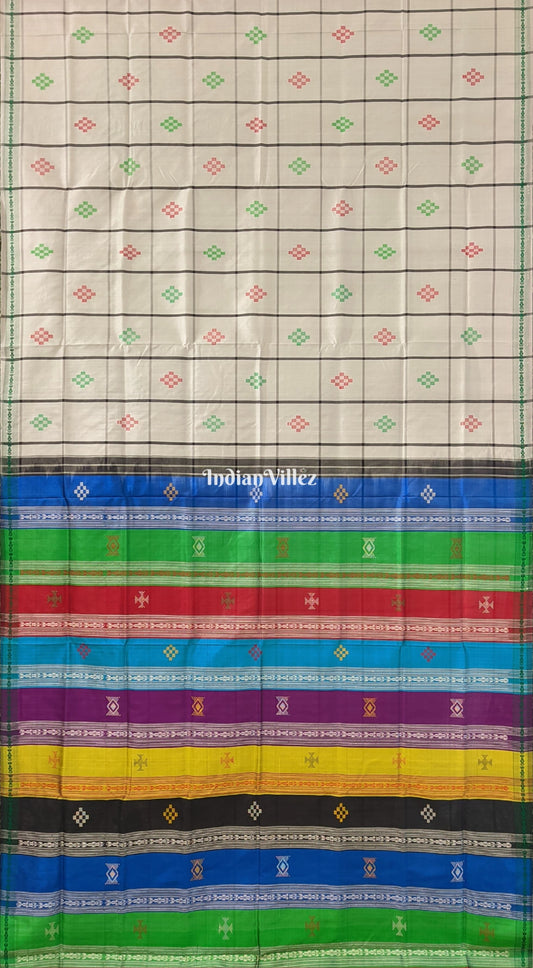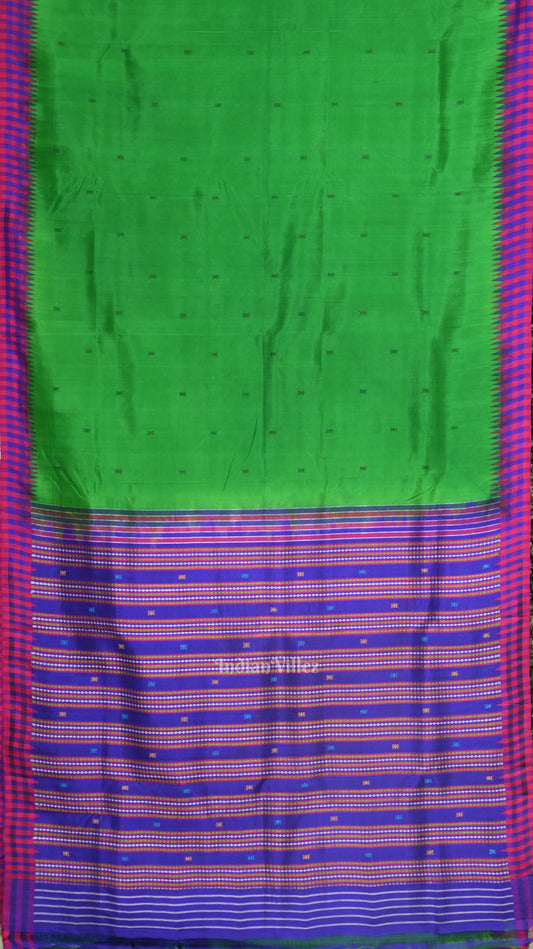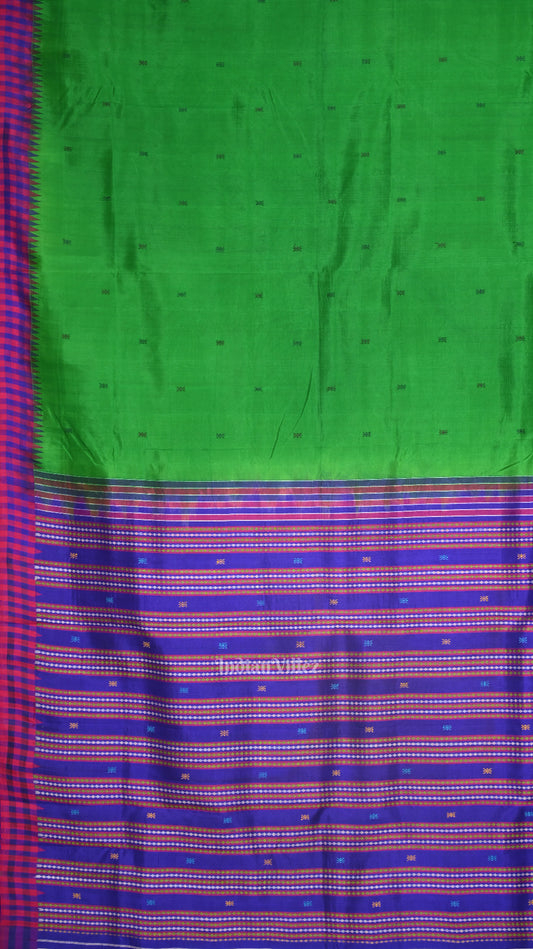Embrace the Elegance of Berhampuri Silk Sarees
When it comes to traditional Indian attire, few options are as stunning and culturally rich as the Berhampuri Silk Saree. Renowned for its exceptional craftsmanship and intricate designs, the Berhampuri Silk Patta Saree is a treasure trove of elegance and heritage. At IndianVillez, we take immense pride in bringing these exquisite pieces of art directly to you, ensuring that you not only wear a saree but carry a piece of history with you.
Why Berhampuri Silk Sarees are Special?
Berhampuri Sarees are much more than just beautiful garments—they are a testament to the artistry and dedication of weavers from Berhampur, Odisha. These sarees are distinguished by their unique weave and luxurious silk texture, offering a perfect blend of tradition and sophistication. The Berhampuri Patta is known for its double Pallu with vibrant colors, distinctive temple borders, and high-quality silk fabric, making it a go-to choice for weddings, festivals, and other grand celebrations.
The Timeless Appeal of Berhampuri Patta
The Berhampuri Patta saree is synonymous with class and grandeur. The term "Patta" refers to the use of rich silk fabric, which is meticulously woven to create sarees that are not only stunning to look at but also feel luxurious against the skin. Each saree tells a story of heritage and tradition, with motifs and designs that are deeply rooted in the culture of Odisha. The temple motifs and traditional designs are crafted with such finesse that they enhance the beauty of the wearer, making it a perfect choice for any special occasion.
Why Choose IndianVillez for Your Berhampuri Saree?
At IndianVillez, we understand the emotional connection and cultural significance that sarees hold. That's why we are committed to offering an exclusive collection of Double Pallu Berhampuri Silk Sarees that are sourced directly from skilled artisans in Berhampur, Ganjam. Our sarees are not just fashion statements; they are pieces of heritage that you can proudly showcase. Here’s why IndianVillez is the ideal choice for purchasing your Berhampuri Saree:
- 1. Authenticity Guaranteed: Each Berhampuri Patta saree in our collection is sourced directly from the weavers, ensuring you get only authentic and high-quality products.
- 2. Exclusive Designs: Our selection includes a range of exclusive designs that are both traditional and contemporary, catering to diverse tastes and preferences.
- 3. Quality Craftsmanship: We are committed to offering sarees that reflect the highest standards of craftsmanship. Each Berhampuri Saree is meticulously crafted to ensure that you receive nothing but the best.
- 4. Custom Tailoring and Personalization: At IndianVillez, we go the extra mile to make your shopping experience memorable. We offer customization options to ensure that your saree is tailored to perfection.
- 5. Ethical Sourcing: We work closely with artisans to ensure fair wages and ethical working conditions, promoting sustainable and responsible fashion.
Berhampuri Patta: A Must-Have in Your Wardrobe
Whether you’re attending a wedding, celebrating a festival, or looking for the perfect outfit for a formal event, a Berhampuri Patta Saree is the ideal choice. The rich texture, vibrant hues, and intricate designs make these sarees a showstopper. At IndianVillez, we offer a variety of styles and designs that cater to every taste—whether you prefer bold and vibrant patterns or subtle and elegant motifs.
Styling Your Berhampuri Silk Saree
Styling a Berhampuri Silk Saree is an art in itself. Here are a few tips to help you make the most of your Berhampuri Patta:
- Accessorize Wisely: Pair your saree with traditional jewelry like silver filigree or temple jewelry to enhance its elegance.
- Choose the Right Blouse: A contrasting blouse with intricate embroidery or a plain silk blouse can complement the rich texture of your Berhampuri Silk Patta Saree.
- Draping Style: Experiment with different draping styles to add a contemporary twist to the traditional saree look. The Nivi drape or the Bengali style drape works beautifully with these sarees.
Perfect Gift for Loved Ones
A Berhampuri Silk Saree makes for an exquisite gift for your loved ones. Whether it's for a wedding, an anniversary, or a milestone celebration, gifting a Double Pallu Berhampuri Patta Saree shows thoughtfulness and appreciation for the recipient’s unique style and heritage. At IndianVillez, we offer beautifully packaged sarees that are perfect for gifting.
Your One-Stop Destination for Berhampuri Sarees
At IndianVillez, we are dedicated to bringing you the best of Indian handlooms. Our collection of Berhampuri Patta Silk Sarees is carefully curated to include only the finest pieces that reflect the rich cultural heritage of Odisha. From traditional motifs to modern interpretations, our range of Silk Patta Sarees offers something for everyone.
We invite you to explore our exclusive collection and experience the beauty of Berhampuri sarees collection. With our commitment to quality, authenticity, and customer satisfaction, IndianVillez is your trusted destination for all things beautiful and traditional. At IndianVillez, we don't just sell sarees; we celebrate the rich tapestry of Indian culture and tradition. Come, be a part of our journey and let us help you find the perfect Berhampuri Silk Patta Saree that resonates with your personal style and grace.
Taking Care of the Berhampuri Saree
- Before washing your sarees with soap, keep them soaked in salt water for some time but not for a longer duration.
- Use good quality, mild detergents to hand wash your sarees. Do not use dyes, bleach, harsh stain removers on delicate fabrics.
- Avoid using a brush on Berhampuri handloom sarees as it can easily tear the fabric.
- Remember to wash these Berhampuri handlooms only in cold water. Also Never wash your expensive handloom sarees in a washing machine.
- Petrol , talcum powder can be used for stain removal. OR else dry cleaning would be the best option.
- Avoid direct sunlight when drying a saree as it might lead to fabric discoloration rather dry it in partial shade.
- Never wring the saree rather wrap the saree in clean, absorbent, light coloured towels and press it gently.
- Always try to dry your saree separately from other clothes.
- While pressing the Berhampuri silk saree do not spray water on it before ironing as it may leave permanent marks on the fabric.
- Keep neem leaves in between the saree folds to preserve them from pests.
- Also change the saree folds to avoid creases that can wear and tear the fabric.
- Store them and hang them in a metal hanger in a less humid place.

